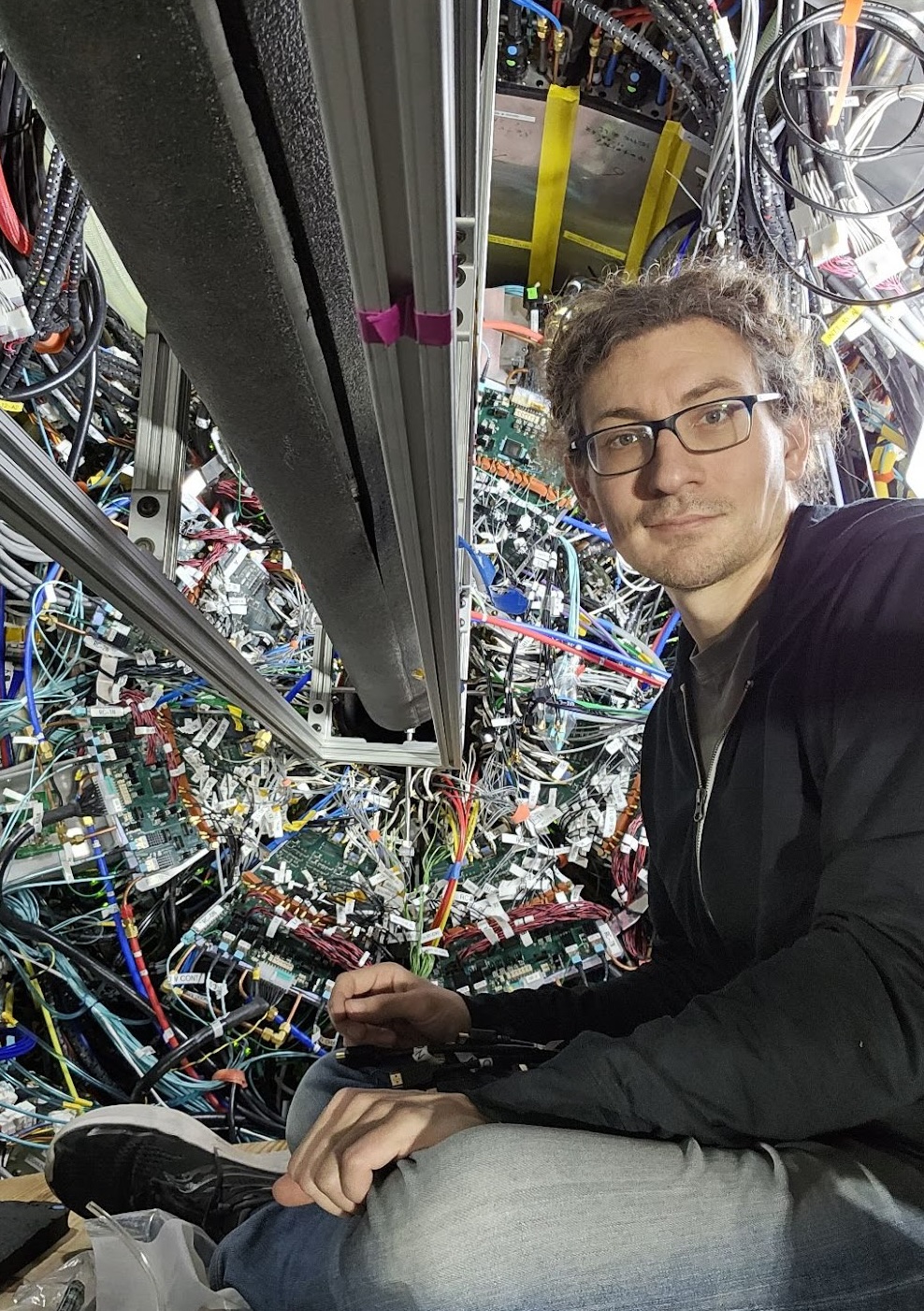 How long have you been working in sPHENIX and at what institution?
How long have you been working in sPHENIX and at what institution?
This is my fifth year with sPHENIX. I joined in 2018 while a research scientist at MIT, then moved to Stony Brook University in 2019.
What is the focus of your work on the sPHENIX experiment?
My focus right now is the correction of distortions in the TPC, which arise due to field imperfections and, especially, the presence of spacecharge in the chamber, and so vary with time. I lead the TPC Distortions group, all of whom are working hard with the first datasets coming after the extensive work on the TPC. I've also had a hand in several different components of the TPC hardware that are involved in the distortions monitoring.
Where were you born and what is your educational background before your
current position?
I was born and grew up mostly in the US, but my high school was on a military base in Germany. Because of that, I was technically an international student when I attended Valparaiso University, in Indiana (classmates told me my english was really impressive). I defended my PhD at MIT in 2012.I was born and grew up mostly in the US, but my high school was on a military base in Germany. Because of that, I was technically an international student when I attended Valparaiso University, in Indiana (classmates told me my english was really impressive). I defended my PhD at MIT in 2012.
What is the title of your Ph.D. or tentative title? Awards or
biggest talk highlight?
"W Boson Cross Sections and Single-Spin Asymmetries in Polarized Proton-Proton Collisions at STAR", from RHIC's first 500 GeV run in 2009. My most interesting talk experience was probably the talk I gave on the DarkLight experiment in Cuba in 2016, during the brief period when relations with the US were thawing.
How did you decide to go into heavy ion or spin research?
I started with STAR as an undergraduate, building PMT boxes for its endcap calorimeter. As a grad student, I got to work on a spin analysis that came from the same device I'd helped assemble, and was fascinated by the idea that all the complex dynamics of non-perturbative QCD still somehow yields hbar/2 for the proton spin. I enjoy how a project like sPHENIX combines expertise on every level of software and hardware to tease out details of QCD's behavior in an area where theory doesn't have clear answers.
What do you like to do in your spare time?
I like to get outside when the weather cooperates, going for a run or a bike ride. Indoors, I like to learn new skills. Lately, that's been knitting and the tenor banjo.
Fun fact?
I make puzzles! A puzzle box I made for a puzzle-hunt game in 2019 was in an exhibit at the Design Museum of Chicago this past winter.